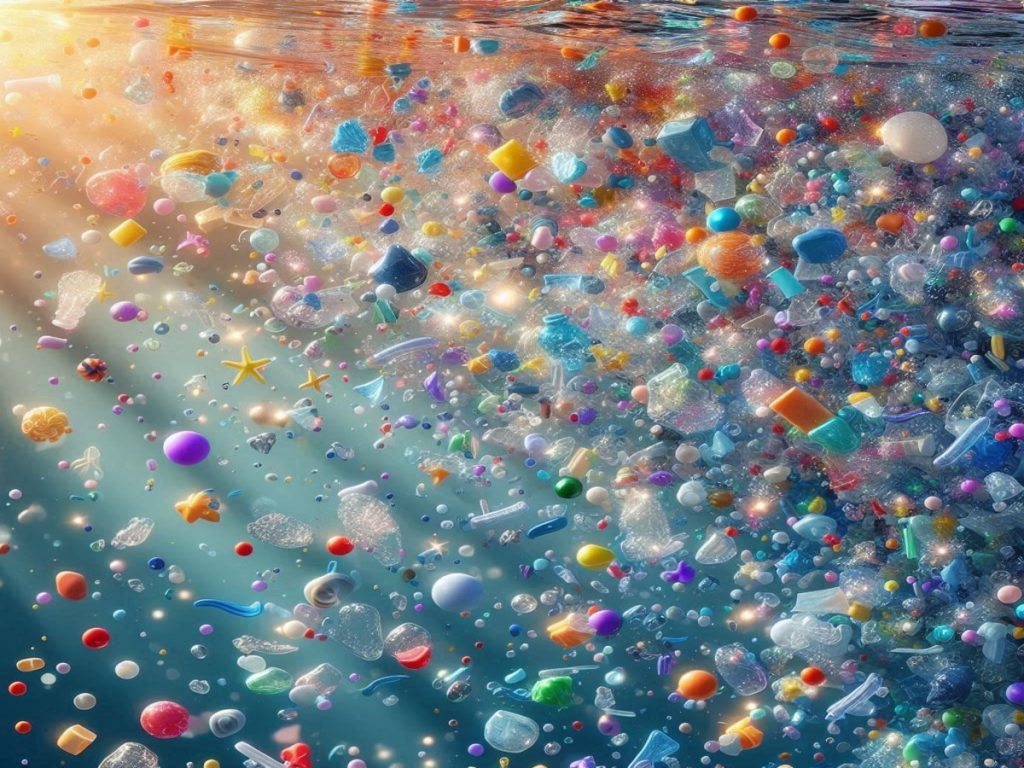It’s official: We’ve got plastic in our brains. Yep, you read that right. Tiny, almost invisible shards of plastic, also called microplastics, are making their way into our bodies, and yes, even into our brains.
A recent study found that human brain samples collected earlier this year contained more microplastics than samples collected just eight years ago. And the numbers are alarming.
Scientists found that these plastic bits, which we can barely see, are about 50% higher than they were back in 2016. Imagine – our brains today are 99.5% brain and the rest? You guessed it: plastic.
How Did This Happen?
Microplastics are basically tiny pieces of plastic that come from all sorts of things—our clothes, bottles, food packaging, and even the tires on our cars. Over time, these bits break down into smaller pieces (we’re talking nanometers, so really small) and enter our environment, our food, and eventually our bodies.
Once inside, these sneaky little plastics don’t just stop—they travel through the bloodstream and find their way into some of our most vital organs, like the liver, kidneys, and yes, the brain.
One theory scientists are exploring is that these nanoplastics hitch a ride with fats we eat, and since our brains are made up of around 60% fat, it makes sense that they’d end up there.
But, what’s really worrying is that these plastic particles might actually affect how our brains work. The research is still in its early stages, but experts are scrambling to figure out what all this plastic exposure means for our health.
For a more in-depth look, check out our previous article on Microplastics.
Are Microplastics Dangerous?
That’s the big question—and one that doesn’t have a clear answer yet. While we know that microplastics have been found in everything from human hearts to the placenta, scientists are still figuring out how much harm they’re actually doing.
Some experts worry that these plastics could cause serious damage, especially because plastics are known to carry other chemicals with them.
Think of it like a Trojan horse: the plastic gets into our bodies, but what it’s really bringing are chemicals like BPA, phthalates, and flame retardants—nasty stuff linked to things like hormone disruptions and even cancer.
One major concern is whether these plastics, especially the really tiny nanoplastics, could interfere with how our cells work. If these plastics build up in our bodies over time, they might disrupt everything from our immune system to our reproductive health.
What Can We Do About It?
Now, before we all start panicking, it’s important to remember that no one’s saying you have to live without plastic completely. I mean, could you even imagine a life without your phone or laptop? Those are full of plastic! But there are definitely ways we can limit our exposure.
Here are a few simple swaps:
- Ditch the plastic water bottles. A 2024 study found that just one liter of bottled water contains, on average, 240,000 plastic particles. You’re basically drinking plastic soup. Switching to a reusable metal or glass water bottle? Easy win.
- Say no to plastic bags. Cloth or paper bags work just as well for groceries, and many communities are already banning plastic bags to cut down on waste.
- Store your food in glass containers. Heating plastic containers can cause even more microplastics to leach into your food, so swapping them out for glass is a smart move.
- Go old-school with silverware. Bring your own utensils to work or when you’re grabbing takeout. It might feel weird at first, but it’s an easy way to cut back on single-use plastics.
- Watch out for plastic in your clothes. Clothes made from synthetic fabrics shed microplastics every time you wash them. Consider investing in natural fabrics like cotton or wool.
The Bottom Line
Look, no one’s going to be able to completely avoid plastics anytime soon. But by making a few small changes in our daily lives, we can reduce how much plastic gets into our bodies—and hopefully keep our brains a little less plastic-y.
Researchers are still working to understand just how much these tiny shards affect us, but one thing’s for sure: less plastic in our lives can’t be a bad thing.
So, start with the easy stuff. Cut back on plastic bottles, bags, and packaging where you can. The planet (and your brain) will thank you.
